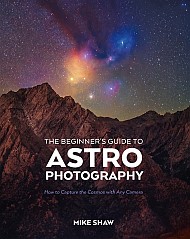Astronomy
Physicists have worked out a universal law for how objects shatter
Physicists have worked out a universal law for how objects shatter
Emergency response needed to prevent climate breakdown, warn experts
Emergency response needed to prevent climate breakdown, warn experts
The Star That Shouldn't Exist
A red giant orbiting a dormant black hole is spinning impossibly fast and contains chemistry that makes it look ancient when it's actually relatively young. By listening to faint vibrations rippling through the star, astronomers have decoded a violent secret, that this star likely collided with and absorbed another star billions of years ago, an explosive merger that left it chemically confused and rotating once every 398 days. The discovery reveals how even quiet black hole systems can have turbulent histories written in starlight.
After a Century of Searching, We May Have Finally Seen Dark Matter
Ninety five years after Swiss astronomer Fritz Zwicky inferred its existence from galaxies moving impossibly fast, researchers may have detected the first direct evidence of dark matter, the invisible scaffolding that holds the universe together. Using gamma ray data from NASA's Fermi Space Telescope, a Japanese physicist has identified a halo of extremely energetic photons around the Milky Way's center that matches predictions for annihilating dark matter particles. If confirmed, humanity has finally "seen" the unseeable.
Warming and droughts led to collapse of the Indus Valley Civilisation
Warming and droughts led to collapse of the Indus Valley Civilisation
Deadly fungus makes sick frogs jump far, possibly to find mates
Deadly fungus makes sick frogs jump far, possibly to find mates
ESA Council meeting at Ministerial level 2025 - press conference
Watch the replay of the press conference held at the conclusion of ESA's Ministerial Council 2025 (CM25) in Bremen, Germany. ESA Director General Josef Aschbacher, as well as the hosting minister and the CM25 chair, present the outcome of this high-level meeting that took place on 26 and 27 November.
ESA Member States commit to largest contributions at Ministerial
The largest contributions in the history of the European Space Agency, €22.1 bn, have been approved at its Council meeting at Ministerial level in Bremen, Germany.
Devastating Stellar Storm Seen on Red Dwarf Star
On Earth, Coronal Mass Ejections (CMEs) like the one we experienced earlier this month are aesthetic, even disruptive events, sending aurora southward and interrupting radio signals. But around other stars, they could prove lethal to life. This point was driven home by a recent CME detection from an M-class red dwarf star. This marks the first detection of an energetic Type II radio burst from a nearby star.
Why Being in the "Right Place" Isn't Enough for Life
A planet’s habitability is determined by a confluence of many factors. So far, our explorations of potentially habitable worlds beyond our solar system have focused exclusively on their position in the “Goldilocks Zone” of their solar system, where their temperature determines whether or not liquid water can exist on their surface, and, more recently, what their atmospheres are composed of. That’s in part due to the technical limitations of the instruments available to us - even the powerful James Webb Space Telescope is capable only of seeing atmospheres of very large planets nearby. But in the coming decades, we’ll get new tools, like the Habitable Worlds Observatory, that are more specifically tailored to search for those potentially habitable worlds. So what should we use them to look for? A new paper available in pre-print on arXiv by Benjamin Farcy of the University of Maryland and his colleagues, argues that we should look to how a planet formed to understand its chances of harboring life.
Astronomers Pinpoint 3I/ATLAS's Path Based on Data from Mars
Since comet 3I/ATLAS, the third known interstellar object, was discovered on 1 July 2025, astronomers worldwide have worked to predict its trajectory. ESA has now improved the comet’s predicted location by a factor of 10, thanks to the innovative use of observation data from our ExoMars Trace Gas Orbiter (TGO) spacecraft orbiting Mars.


